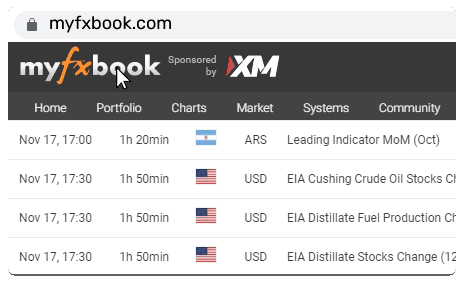- Hem
- Gemenskapen
- Allmänt
- Copy Trading vs Manual Trading: Which Delivers More Consiste...
Copy Trading vs Manual Trading: Which Delivers More Consistent Results?
Every trader wants one thing and that is consistent trading results. But the big question is, how do you actually get there? Some traders rely on copy trading, which has become a booming trend. In fact, according to the Global Market Insights, the global social trading market — which includes copy trading — was valued at around $3.2 billion in 2024 and is expected to keep growing fast. Others prefer manual trading. They trust their own instincts, experience, and timing to make every move. So, which one really delivers more consistent results? The answer might surprise you and it could change the way you think about trading.
So, without further ado, let’s start understanding both approaches in detail to make better decisions. What is Copy Trading?
Copy trading is a simple way to trade by automatically copying the moves of experienced traders. It’s become really popular, especially among beginners or people who don’t have the time to analyze markets on their own. With copy trading platforms, you can connect with top traders, choose who you want to follow, and the system will automatically replicate their trades in your account. In short, you’re using their experience to grow your investments without being a trading expert yourself.
The biggest advantage of forex copy trading is how much it simplifies the process. You don’t need to spend hours studying charts or figuring out complex strategies. Instead, you can rely on professionals with proven results. That said, it’s still important to pick the right traders carefully and remember that even the best track record doesn’t guarantee future profits.
When it comes to choosing between Copy Trading and Manual Trading, copy trading wins points for convenience and ease as it is the best way to trade with less risk. It’s perfect for anyone who wants to trade but doesn’t have the time, confidence, or in-depth knowledge to do it manually. Just keep in mind, like any type of trading, there are risks involved, so smart risk management and diversification are key.What is Manual Trading?Manual trading is a process of controlling all your trades on your own. You have full control to decide when to buy, when to sell, and how to respond to market changes. Unlike automated methods like copy trading, manual trading requires you to study charts, analyze trends, and build your own strategies. This hands-on style lets you shape every decision around your goals and risk comfort level.A big advantage of manual trading is flexibility. You can adjust your strategy on the spot if the market shifts or a new opportunity appears. That quick response and personal touch are why many experienced traders still prefer manual trading in the Copy Trading vs Manual Trading debate.Of course, manual trading also takes time and dedication. Therefore, you need to stay updated on market news and be ready to monitor your trades closely. Emotions such as fear or greed can also affect decisions and sometimes lead to mistakes. Still, many traders find this approach rewarding because it allows them to build confidence and truly understand the market through their own efforts.Copy Trading Vs Manual TradingAdvantages of Copy TradingCopy trading offers several advantages, including:Saves TimeOne of the biggest benefits of copy trading is how much time it saves. Instead of spending hours analyzing charts or tracking financial news, you can let experienced traders handle the market research and execution for you. This makes copy trading appealing for beginners and busy professionals, as it removes the need for constant monitoring. Moreover, beginners can skip the steep learning curve and start trading confidently by following proven traders, while professionals can diversify their portfolios without adding extra workload. Also, the automated nature of copy trading helps reduce stress. Thus, it's the perfect setup for anyone looking to trade smarter, not harder.Avoid Emotional Decision
Another biggest strength of copy trading is its ability to help you avoid emotional trading decisions. In manual trading, feelings like fear or greed can easily lead to impulsive moves, such as selling too early during a dip or overtrading during a rally. Copy trading removes that emotional pressure by automatically mirroring the strategies of experienced traders who base their decisions on logic and data. This creates a more disciplined and steady trading experience. In turn, it becomes a consistent profit trading strategy for people who want to stay focused on long-term goals without getting caught up in market emotions.Diversification
Moreover, copy trading supports diversification. Instead of relying on a single strategy or asset, you can follow multiple skilled traders with different trading styles, markets, and risk levels. This naturally spreads your investments and reduces overall exposure. Ultimately, risk management in copy trading is simpler. This strategy eliminates the need for spending hours researching or building separate strategies for yourself. Most automated trading platforms allow you to balance your portfolio by selecting traders who complement each other’s approaches. Thus, it’s an effortless way to manage risk, protect your investments from sudden market swings, and maintain a more stable path toward consistent results.Disadvantages of Copy TradingWhile copy trading offers plenty of benefits, it also comes with a few drawbacks that traders should consider.Reliance on OthersOne major downside is that copytrading makes you dependent on others' decisions. When you copy another trader, you’re trusting their judgment, strategy, and experience. So, if they make a poor call or hit a losing streak, your account can take a hit too. This reliance means you have less control over your outcomes, so it’s important to choose traders carefully and remember that past success doesn’t guarantee future results.Limited ControlCopy trading also limits how much control you have over your investments. Since trades are automatically mirrored, you don’t get to pick specific assets, strategies, or timing. While this can be convenient, it may feel restrictive for those who prefer hands-on involvement. Manual trading, by contrast, gives you full flexibility to adjust and respond to market conditions on your own terms.Hidden CostsAnother issue to watch for is hidden fees. Some platforms charge extra for copying trades or using certain services, and these costs can slowly reduce your profits. If the trader you follow uses paid tools or premium features, those expenses might be passed on as well. Compared to manual trading, which typically has fewer added costs, copy trading can sometimes be less cost-efficient.Advantages of Manual TradingFull Control Over TradesOne of the greatest strengths of manual trading is the complete control it gives you over your trades. You decide which assets to buy or sell, set your own entry and exit points, and shape your strategy to match your goals. This independence allows traders to react instantly to market changes instead of waiting for automated systems to adjust. Therefore, many professional traders prefer manual trading for the flexibility and precision it offers when reacting to fast-moving markets. Unlike copy trading, where you rely on someone else’s judgment, manual trading lets you take charge of every move, making it ideal for those who enjoy being actively involved in their trading journey.Flexibility and AdaptabilityAnother major advantage of manual trading is its ability to adapt quickly to market conditions. Because you’re in control, you can adjust your strategy the moment new information appears; whether the market is trending, volatile, or moving sideways. Data from BlueberryMarkets (2024) highlights that manual traders often outperform automated systems during unpredictable market shifts because of their ability to interpret news, sentiment, and technical cues in real time. So, we can say this adaptability gives manual trading an edge for those who value quick decision-making and personal strategy development.High Return for Skilled TradersSkilled manual traders often have the potential to earn higher returns because they can do what automated systems can’t. They have the advantage of thinking critically and adapting to changing situations. By spotting opportunities that algorithms might overlook, applying judgment to complex market setups, and exercising patience and discipline, they can take advantage of market inefficiencies or emotional extremes. Experienced traders also combine different forms of analysis, such as technical, fundamental, and sentiment insights, to make more informed decisions. This human insight such as intuition, pattern recognition, and an understanding of market context can give manual traders a real edge in certain trading environments.Disadvantages of Manual Trading Time-Consuming One of the main drawbacks of manual trading is the amount of time it demands. You need to constantly analyze charts, study market trends, and stay updated with financial news to make informed decisions. This hands-on approach can be overwhelming, especially for traders balancing other commitments. According to Blueberry Markets (2024), manual traders often spend several hours a day monitoring positions and adjusting strategies, which can lead to fatigue and decision burnout over time. Emotional Bias Another major challenge in manual trading is emotional bias. Because every decision rests on you, emotions like fear, greed, or frustration can easily cloud your judgment. For instance, panic during a market dip might push you to sell too soon, while excitement in a rally could lead to overtrading. So, this emotional aspect makes manual trading riskier for beginners who lack discipline or experience. Therefore, it is essential for traders to learn how to stay calm and objective for long-term success in manual trading.Bottom LineIn the end, both copy trading and manual trading have their own strengths and challenges. Copy trading is great for saving time, avoiding emotional decisions, and building a diversified portfolio with less effort. But it also means relying on others and giving up some control, which might not suit everyone. Manual trading, on the other hand, offers complete control and flexibility that allows you to make quick decisions and fine-tune your strategies. Though it does require more time, focus, and discipline. The right choice really depends on your goals, experience, and what you want to achieve. Hence, what matters most is understanding both approaches so you can trade in a way that fits your lifestyle and helps you grow as an investor.If you’re ready to explore a smarter, more efficient way to invest, check out Fintec Markets Copy Trading and start your copy trading journey today.













